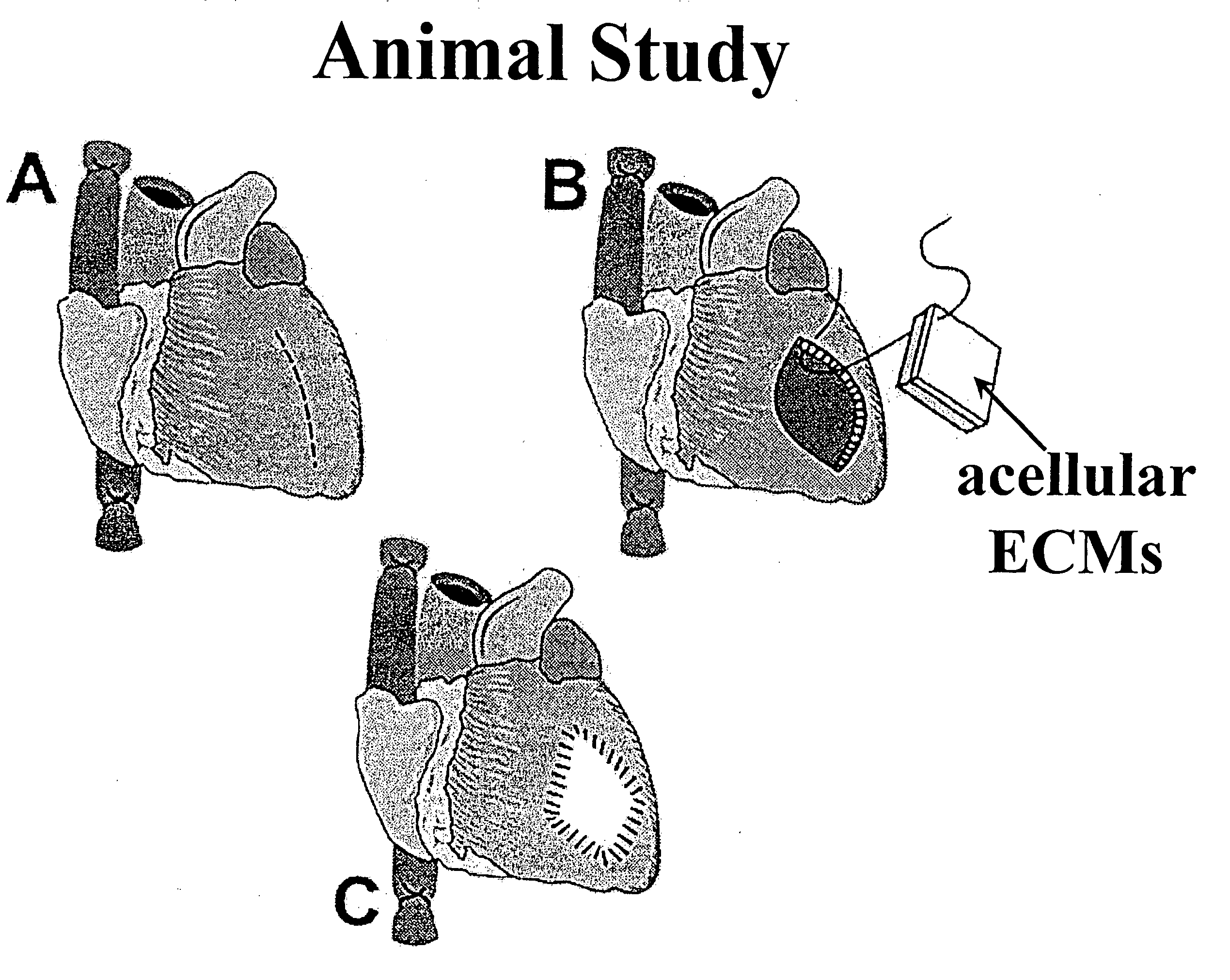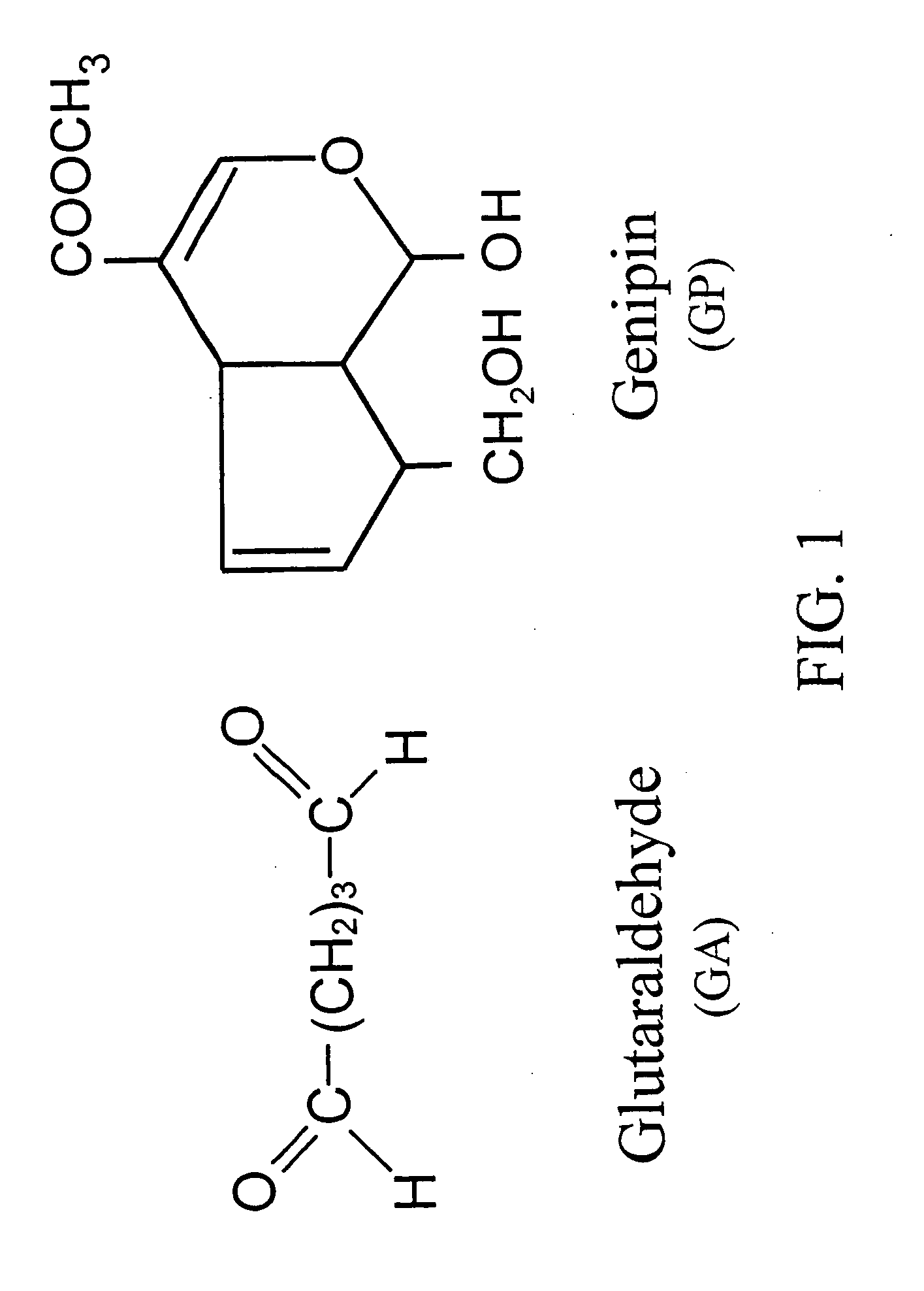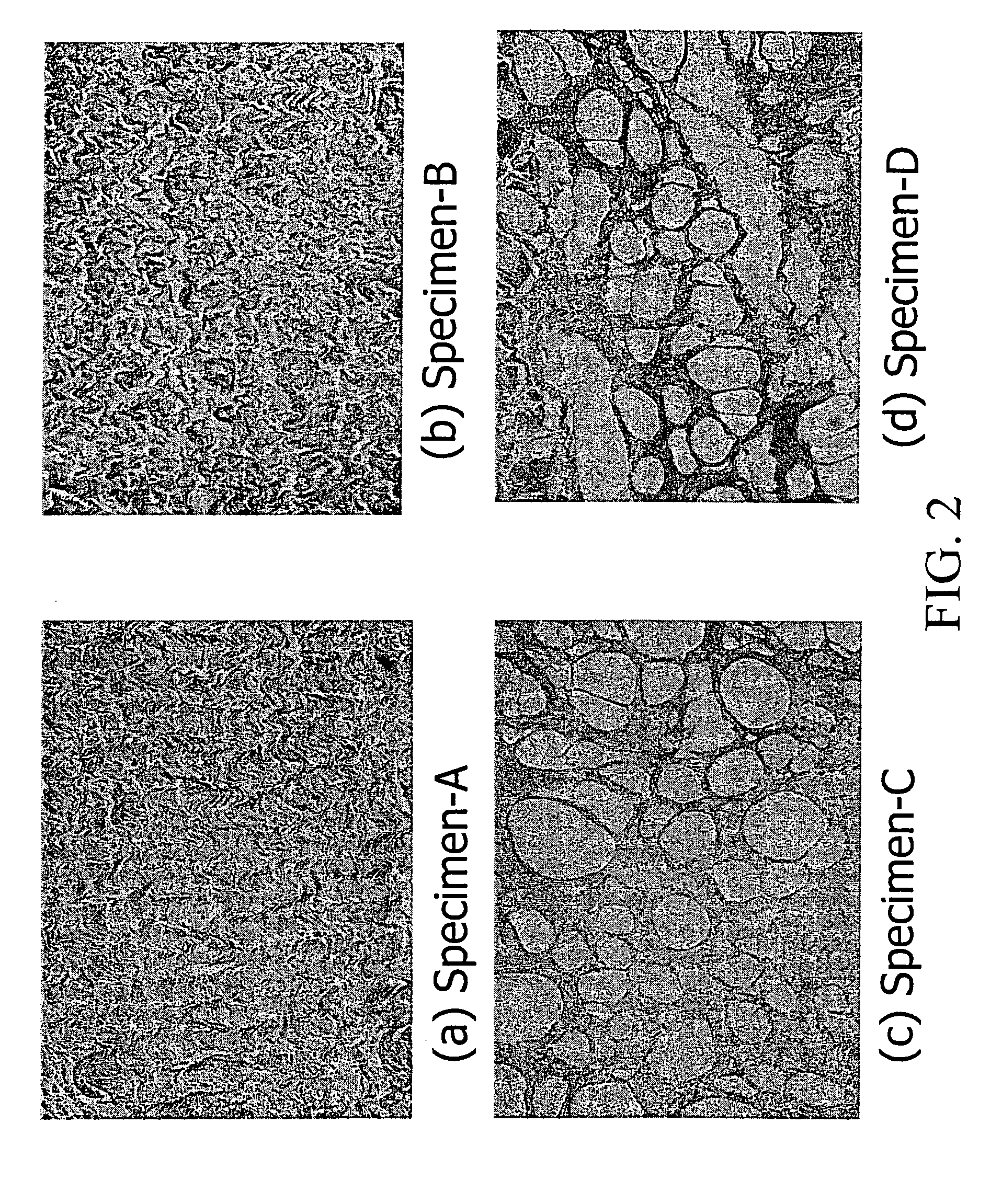Peritoneal regeneration with acellular pericardial patch
a peritoneal patch and peritoneal artery technology, applied in the field of biomedical materials chemical modification, can solve the problems of easy degradation of collagenase, low tensile strength, and impair the biocompatibility of biological tissue, and achieve the effects of reducing immunogenicity, reducing enzymatic degradation, and reducing antigenicity
- Summary
- Abstract
- Description
- Claims
- Application Information
AI Technical Summary
Benefits of technology
Problems solved by technology
Method used
Image
Examples
example 1
Tissue Specimen Preparation
[0109] In one embodiment of the present invention, bovine pericardia procured from a slaughterhouse are used as raw materials. The procured pericardia are transported to the laboratory in a cold normal saline. In the laboratory, the pericardia are first gently rinsed with fresh saline to remove excess blood on tissue. Adherent fat is then carefully trimmed from the pericardial surface. The cleaned / trimmed pericardium before acellular process is herein coded specimen-A. The procedure used to remove the cellular components from bovine pericardia is adapted from a method developed by Courtman et al (J Biomed Mater Res 1994;28:655-66), which is also referred to herein as “an acellularization process”. A portion of the trimmed pericardia is then immersed in a hypotonic tris buffer (pH 8.0) containing a protease inhibitor (phenylmethyl-sulfonyl fluoride, 0.35 mg / L) for 24 hours at 4° C. under constant stirring. Subsequently, they are immersed in a 1% solution o...
example 3
Comparison of Glutaraldehyde and Genipin Crosslinking
[0120] Pericardia tissue chemically treated with glutaraldehyde and genipin shows different characteristics and biocompatibility. FIG. 5 shows thickness of the glutaraldehyde-fixed cellular tissue (A / GA), the glutaraldehyde-fixed acellular tissue (B / GA), the genipin-fixed cellular tissue (A / GP), and the genipin-fixed acellular tissue (B / GP) before implantation. In general, the acellular tissue shows increased tissue thickness by either type of crosslinking (with glutaraldehyde or genipin) as compared to the control cellular tissue. It is further noticed that genipin-fixed acellular tissue shows the highest tissue thickness among the samples characterized, probably due to enhanced water absorption. This high tissue thickness of genipin-fixed acellular tissue is desirable for tissue engineering in vivo or in vitro in medical devices, such as an extended-release drug delivery device, vascular or skin graft, or orthopedic prosthesis ...
example 4
Animal Implant Study
[0123] The cellular and acellular tissue fixed with glutaraldehyde and genipin from Example 2 were implanted subcutaneously in a growing rat model (4-week-old male Wistar) under aseptic conditions. Each test sample was approximately 1 cm by 2 cm coupon. In a first study, genipin-crosslinked tissue for specimen-A / GP, specimen-B / GP, specimen-C / GP, and specimen-D / GP are implanted. FIG. 8 shows photomicrographs of H&E stained genipin-crosslinked tissue for (a) specimen-A / GP, cellular tissue; (b) specimen-B / GP, acellular tissue; (c) specimen-C / GP, the acid treated acellular tissue; and (d) specimen-D / GP, the enzyme treated acellular tissue: all retrieved at 3-day postoperatively. It is apparent that cells infiltration into the enlarged pores of the enzyme treated specimen-D / GP is quite visible and evident. The samples used for light microscopy were fixed in 10% phosphate buffered formalin for at least 3 days and prepared for histological examination. In the histologi...
PUM
 Login to View More
Login to View More Abstract
Description
Claims
Application Information
 Login to View More
Login to View More - R&D
- Intellectual Property
- Life Sciences
- Materials
- Tech Scout
- Unparalleled Data Quality
- Higher Quality Content
- 60% Fewer Hallucinations
Browse by: Latest US Patents, China's latest patents, Technical Efficacy Thesaurus, Application Domain, Technology Topic, Popular Technical Reports.
© 2025 PatSnap. All rights reserved.Legal|Privacy policy|Modern Slavery Act Transparency Statement|Sitemap|About US| Contact US: help@patsnap.com



